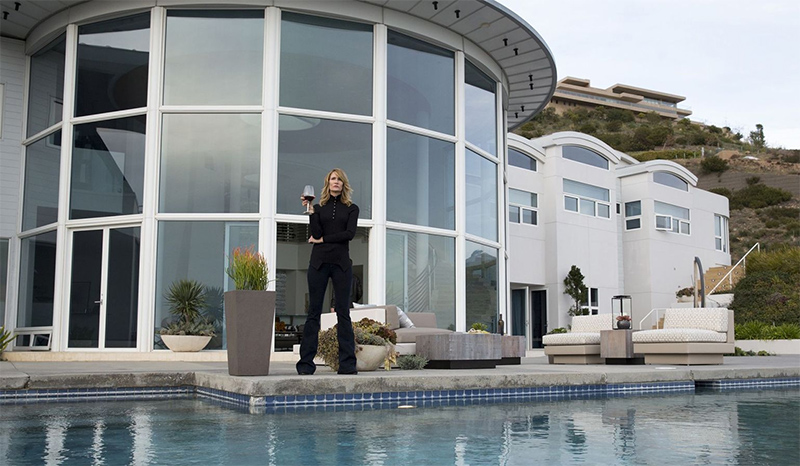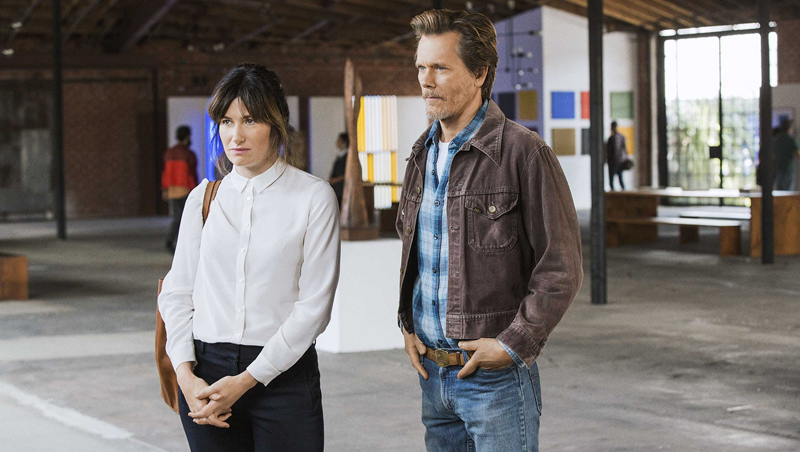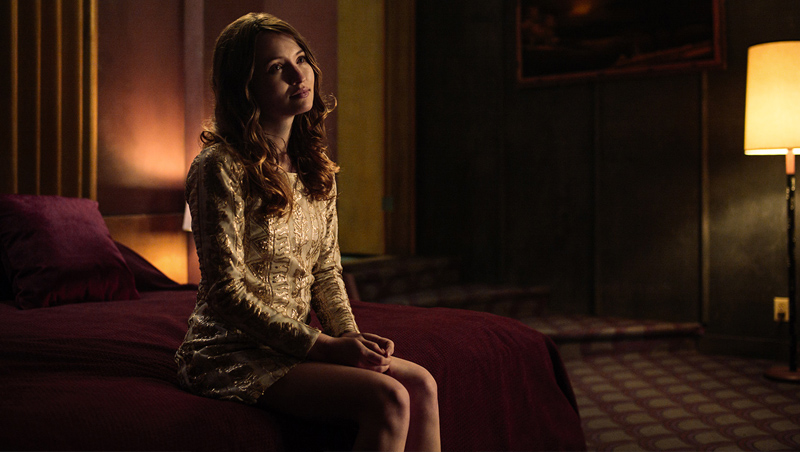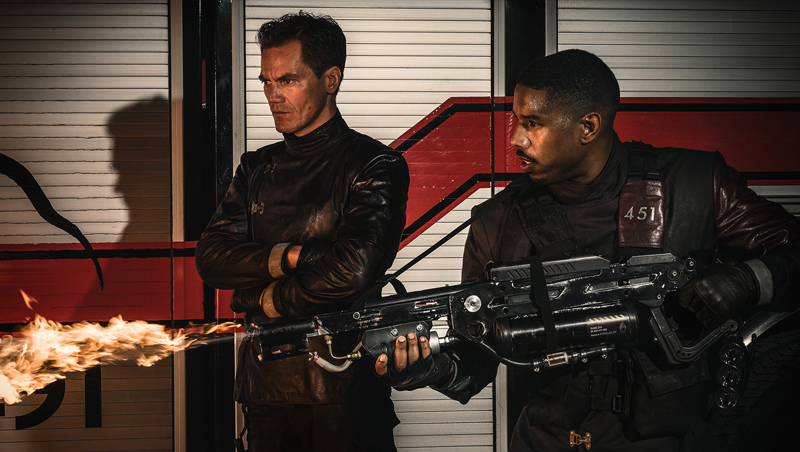
How Should a Literary Adaptation Be? We Asked the Critics for the Answer
On Source Material, Interiority, and the Hazards of Going from Page to Screen
“What bothers me is when people adapt a book who seem to not have understood the book,” says Matt Zoller Seitz, TV critic for New York magazine, during an episode of Vulture’s TV Podcast. “It’s like, did you get the book, or did you not get the book?”
Zoller Seitz had joined his colleagues, columnist Jen Chaney and host Gazelle Emami to talk literary adaptations on TV. There was a lot of ground to cover. American Gods, Big Little Lies, I Love Dick, and The Handmaid’s Tale were all crowding the airwaves early last summer, when the episode was taped. Many of these productions would go on to earn critical acclaim, including major Emmy and Golden Globe nods. (Between the two awards ceremonies, Big Little Lies took home 12 statues; The Handmaid’s Tale, 10.)
Emami, who also serves as Vulture’s deputy editor, described her critical approach in less tangible terms: the disconnect between a source text and a “bad” adaptation is more like “a feeling . . . an atmospheric feeling,” she said, “in the writing.”
Listening, I instinctively found myself agreeing with Zoller Seitz—I hate when adaptations of books I love are mishandled, too. But when it comes to literary adaptations, not all viewers will care about a source text. And a critic’s reading of a source may not have any bearing on whether a TV show is doing something interesting in—and for—the medium.
If the whole process of translating a book to screen is so slippery and capricious, what, then, are the hallmarks of a “good” or “bad” adaptation? And how do you begin to write about them?
*
“This is what I was afraid of,” Inkoo Kang, a tech and culture writer at Slate who served as TV critic at MTV News up until they “pivoted to video” at the end of June, admitted over the phone from San Francisco. We were chatting about literary adaptations and TV criticism more generally, and she had just copped to not always making time to read an adapted novel before she sat down to write her review of the show.
“If I have the time to go back and read the source material I do,” Kang said. “But I don’t always have that time. I actually did try with The Handmaid’s Tale,” she added, though it wasn’t always a pleasurable reading experience. She found Atwood’s prose “cold and clinical” and the literary heroine that inspired Elisabeth Moss’s award-winning performance “extremely passive.” In that respect, Kang thinks Offred’s transformation into a more active on-screen character was necessary to make good television.
“The TV show offers a more traditional heroine,” she said. “[Offred is] more snarky and she is a lot more openly—I mean, you can say ‘openly’ relatively—critical of the regime.”
Kang is less interested in comparing literature and TV than in examining what visual mediums do well. Most often, she finds herself thinking about how shows adapted from books tackle interiority and world-building. Television is very good at the latter—think of how well-defined the warring factions are in Game of Thrones, for example, or how quickly the lush exteriors of Monterey Bay convey the concerns of their occupants in Big Little Lies. But it’s much more difficult to tap directly into a character’s mindset on TV without resorting to voiceover, imagined interactions, or the helpful nudge of a soundtrack.
 Laura Dern in Big Little Lies (HBO).
Laura Dern in Big Little Lies (HBO).
“It’s very hard to compete against a book on interiority,” said Kang. “To lean into what a visual medium can provide, the visual splendor of a show, I think that’s a really smart decision.” Big Little Lies and The Handmaid’s Tale did this especially well, she contends. “I love that they’re really thinking about the visual specificity of the world that they’re creating.”
As film editor of the Village Voice, Alan Scherstuhl places a personal premium on source texts, but he emphasizes that this has more to do with editorial awareness of audience than anything else. “I think it’s about what you and your editors think your readers expect a review to be,” Scherstuhl said. At the Voice, he adds, that expectation often includes a certain level of expertise.
“You’ve got to keep in mind the cultural meaning of the work itself,” Scherstuhl said. “Not just, what did the novel do that this [adaptation] fails to do, but what does this thing being entered into the bloodstream of the culture do?”
He developed his critical approach over years of covering film for alt-weeklies, and his predilections are often shared by the reviewers he edits. Take Jennifer Krasinsky’s smart and succinct stab at Jill Soloway’s adaptation of I Love Dick, based loosely on an experimental 1997 novel of the same name, written by Chris Kraus.
“The book documented, with uncomfortable but page-turning candor, Kraus’s dissolving marriage and her unrequited desire for a man named Dick whom she barely knew,” Krasinsky writes. “Would that Soloway and [co-creator Sarah] Gubbins had created a show as radically thrilling,” she deadpans a few minutes later, hinging her critical judgment of the series on the novel. “Unfortunately, their eight-episode series guts the book, cleans it up, spices it up for a middlebrow palate, only to create a near-parody of the story they seem to want to tell.”
 Kathryn Hahn and Kevin Bacon in I Love Dick (Amazon).
Kathryn Hahn and Kevin Bacon in I Love Dick (Amazon).
Aside from a blistering Alexandra Schwartz column at The New Yorker, Krasinsky’s review was a memorable outlier amidst the flurry of last summer’s I Love Dick takes. She drew informed distinctions between Kraus’s radical aims and the less coherent politics of Soloway’s vision—a real “did you get the book, or did you not get the book?” approach.
But such a tactic is something that some outlets can’t provide space for, or that general audiences might find stultifying. When taken to extremes, this approach can even lead to intellectual laziness, suggests Rachel Syme, a culture writer who serves as TV Critic for The New Republic. “I don’t think that you’d be a good critic if you were constantly comparing something to its source material,” said Syme. She calls this “using the material as a cudgel,” rather than “a point of departure for an idea.”
Like Scherstuhl, Syme is interested in the context of a literary source adapted for TV, including cultural reception of the novel. For her, that includes researching “the ways in which the source material was culturally appraised, and how the show might be building upon that, or anathema to the way it first came into the culture.”
Syme did exactly this in her review of 2017’s other Atwood adaptation, Alias Grace, written by Canadian director Sarah Polley and released by Netflix in late September. She moves deftly between discussions of Atwood’s work and its reception in the early ‘90s and Polley’s unique vision for the series.
Still, Syme says, you have to find some balance between discussing the context of an adaptation and offering a judgment of it as a cultural product. “At some point you have to turn away from the source material and just see if it works as a TV show,” she said. “Is it compelling? Is it saying something new? Is it emotionally honest? Is the writing good?”
She adds that she wants to watch something that’s “as good as a TV show, as the book was a book.” She punctuates her speech with emphatic thumps.
“It’s doing the best it can in its own medium. That’s how you honor the source material.”
Sometimes, an adaptation can even improve on the source material, or at least give flat, stereotypical characters a second chance at life on screen. According to Abraham Riesman, a staff culture writer for Vulture, many successful or interesting adaptations expand what was only hinted at on the page.
“This is something that I really liked about [Starz’s] American Gods, for example,” said Riesman, who wrote about Bryan Fuller’s ambitious adaptation of the Neil Gaiman novel last year. “It has the same core premise and some of the same characters, but it takes bits from the novel that only last a couple of pages and makes them into entire episodes. It decompresses in a way that I find fascinating.”
At Vulture, he zeroes in on the series episode that follows Laura, portrayed by actress Emily Browning. “In the novel, we just hear that Shadow and Laura met at a party and hit it off,” Riesman writes. “Here, their relationship’s origin is far more interesting and grants her a remarkable degree of agency.”
 Emily Browning as Laura Moon in American Gods
Emily Browning as Laura Moon in American Gods
Ultimately, these changes are part and parcel of how much leeway a series arc provides for creators tackling a complex literary source. Sometimes, it’s just good TV to move away from the source text and its limitations, riffing on themes instead of adhering to plot.
“I don’t want to see a carbon copy,” said Riesman. “I want to see something that takes basic narrative assumptions and character details and then blows it out and gets weird or ambitious or more contemporary.”
Even before the current boom in literary adaptation, TV on the whole had been getting more weird and a lot more ambitious. In a 2015 essay for The New York Times Magazine, critic Lili Loofbourow suggests that the “Golden Age” of television, which placed a premium on cable dramas with morally ambiguous anti-heroes like Don Draper and Tony Soprano, was finally disrupted by female showrunners and series creators working at streaming networks.
According to Loofbourow, the first spate of break-out hits on streaming services, like Transparent and Orange Is the New Black, introduced new narrative possibilities. These shows rejected the hero or anti-hero for what Loofbourow calls “promiscuous protagonism,” a roving narrative style characterized by sympathy.
“Promiscuous protagonism shrugs off not just clichéd female roles, but also the entire moral vocabulary on which dramas are usually built,” she writes. “Above all, promiscuous protagonism is interested in truths that are collectively produced.” Whether or not you believe in the collaborative aesthetics of a “promiscuous protagonism,” it’s certainly true that series creators like Jill Soloway and Jenji Kohan have prized open space for more ambitious TV storytelling.
Television’s new frontier has been a net positive for creators with a yen for complex page-to-screen projects that explore points of view beyond the white, male anti-hero. Yet page-to-screen projects can also mirror the publishing industry’s own trenchant diversity problems. With increased pressure from consumers and advocates, book publishers have started to diversify storytelling to meet demand—and while this movement can be slow, it has ripple effects for writers working across genre or industry. Both The Handmaid’s Tale and Big Little Lies handle domestic violence and rape with seriousness, for example, while I Love Dick treats middle-aged female lust with similar weight. With overwhelmingly white casts, none of these series tackles race in an especially meaningful way—although I Love Dick skates around with ideas of class politics and queer representation. It’s far from perfect and far from equitable, but the needle is starting to shift.
 Michael Shannon and Michael B. Jordan in Fahrenheit 451 (HBO).
Michael Shannon and Michael B. Jordan in Fahrenheit 451 (HBO).
More adaptations are on the horizon, though it remains to be seen how effectively they will tell new kinds of stories. Last July, HBO announced that George R. R. Martin will help produce an adaptation of Nnedi Okorafor’s novel Who Fears Death. The network is also slated to release a series adaptation of Gillian Flynn’s Sharp Objects this summer, and Iranian-American director Ramin Bahrani is helming their new adaptation of Fahrenheit 451 starring Michael B. Jordan—and that’s just a drop in the bucket.
Given the additional structural barriers that women, POC, and LGBTQ writers face in network TV, it may be that diverse storytelling and complex adaptations have more room to succeed in the streaming marketplace, where there’s less pressure to produce a franchise that props up “risky” or “niche” offerings. As Scherstuhl pointed out, none of the major literary adaptations from last season are obvious franchise material in the way that, say, Game of Thrones turned out to be. Instead, these were niche products for niche audiences, driven by Hollywood names with clout and a passionate vision for their project. (In the case of Soloway’s I Love Dick, which Amazon declined to renew, it may have been too niche.)
Kang, for one, is excited for the conversation between fiction writers and Hollywood to continue.
“If there’s anything good that comes out of this whole book-to-tv scenario, it’s that very particular character experiences—which were perhaps not considered commercially viable five years ago—are now permeating the mainstream,” she told me. “I think if books inspire more of that, that’s a good trend.”
Kristen Evans
Kristen Evans is a critic and freelance journalist with a background in non-profit development, as well as the author of the poetry collection MAMMAL ROOM (SpringGun Press). She has written about feminism, publishing, and culture for The Believer, Brooklyn Magazine, The Los Angeles Times, and LA Weekly, among other outlets. She currently splits her time between Pennsylvania and New York City. Please talk to her about books on Twitter, where she spends too much time tweeting as @paperalphabet.



















